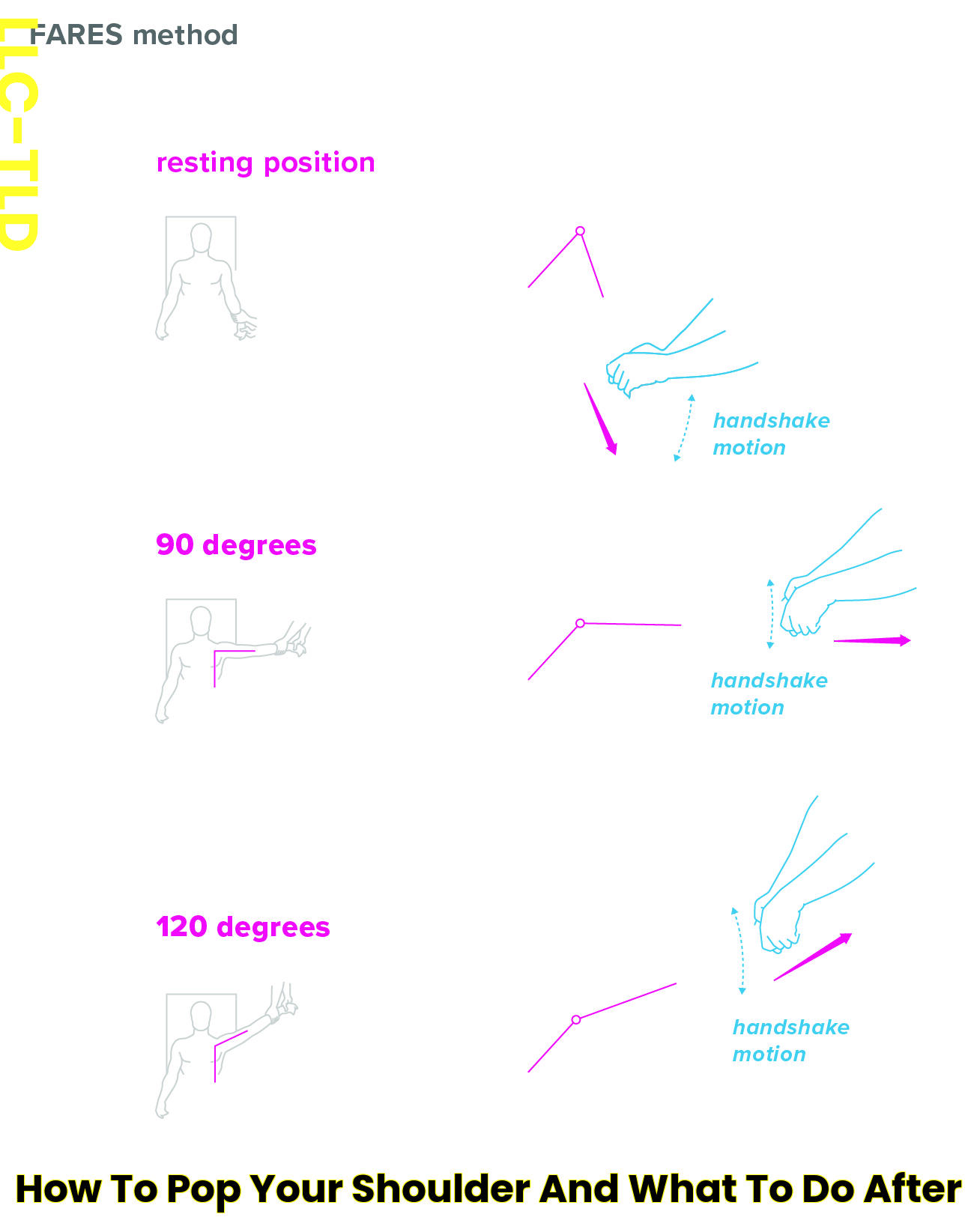In the fast-paced world we live in, the ability to "pop back" – or recover quickly from setbacks and challenges – is a skill that can greatly enhance one's personal and professional life. Whether you're facing physical, mental, or emotional hurdles, learning how to effectively "pop back" can provide the resilience needed to navigate life's ups and downs with grace and confidence.
Many people wonder how to pop back when life throws unexpected curveballs their way. The concept of bouncing back isn't just about endurance; it's about thriving in the face of adversity and building a stronger, more adaptable mindset. This guide is designed to help you understand what it means to "pop back," offering strategies and insights to develop this vital skill.
As you dive into this article, you'll discover various techniques and perspectives on how to enhance your ability to pop back from life's challenges. From understanding the psychological frameworks that support resilience to exploring practical steps you can take today, this guide will equip you with the tools to recover and grow, no matter what life throws at you.
Read also:Sunken Under Eyes Causes Remedies And Prevention Tips
Table of Contents
- What Does It Mean to Pop Back?
- The Science Behind Popping Back
- Psychological Frameworks for Resilience
- How to Pop Back Physically
- How Does Emotional Resilience Play a Role?
- Strategies for Mental Recovery
- How to Pop Back in Professional Settings
- Building a Support System
- The Role of Mindfulness and Meditation
- How Nutrition Affects Your Ability to Pop Back
- How Can You Develop a Pop Back Mindset?
- Common Obstacles to Popping Back and How to Overcome Them
- Case Studies of Successful Pop Back Stories
- Frequently Asked Questions
- Conclusion
What Does It Mean to Pop Back?
Popping back refers to the ability to recover quickly from adversity, setbacks, or challenges. It's not just about returning to a previous state but about growing stronger and more resilient through the experience. This concept is rooted in resilience theory, which suggests that individuals can adapt and thrive despite facing difficulties.
Understanding how to pop back involves recognizing the importance of flexibility, adaptability, and a growth mindset. These qualities enable individuals to view setbacks as opportunities for learning and personal development. By embracing change and uncertainty, people can build the mental and emotional strength needed to overcome obstacles.
Moreover, popping back isn't limited to personal experiences. It extends to professional environments, relationships, and community settings. In each context, the ability to bounce back is crucial for maintaining well-being and achieving success.
The Science Behind Popping Back
The science of resilience provides insights into how individuals can effectively pop back from challenges. Research in psychology and neuroscience has identified key factors that contribute to resilience, including genetics, environment, and personal experiences.
Genetically, some people may be predisposed to resilience due to inherited traits that influence how they respond to stress. However, resilience is not solely determined by genetics. Environmental factors, such as supportive relationships and positive community influences, play a significant role in shaping an individual's ability to bounce back.
Neuroscientific studies have revealed that the brain's plasticity allows it to adapt and change in response to new experiences. This adaptability is a crucial component of resilience, enabling individuals to learn from setbacks and develop new coping strategies. By understanding the science behind popping back, individuals can leverage these insights to enhance their resilience.
Read also:Timeless Hairstyles Of Marilyn Monroe Iconic Looks That Shaped Hollywood
Psychological Frameworks for Resilience
Several psychological frameworks offer valuable insights into building resilience and learning how to pop back. One such framework is the Positive Psychology approach, which emphasizes the importance of cultivating positive emotions, strengths, and virtues to enhance well-being.
Another framework is Cognitive Behavioral Therapy (CBT), which focuses on identifying and changing negative thought patterns that can hinder resilience. By challenging these thoughts and replacing them with more constructive ones, individuals can improve their ability to cope with adversity.
Additionally, the concept of Growth Mindset, popularized by psychologist Carol Dweck, encourages individuals to view challenges as opportunities for growth rather than insurmountable obstacles. This mindset fosters resilience by promoting a willingness to learn from mistakes and persist in the face of setbacks.
How to Pop Back Physically
Physical resilience is an essential component of popping back, as it enables individuals to recover from illness, injury, or physical stress. Building physical resilience involves maintaining a healthy lifestyle, engaging in regular exercise, and getting adequate rest.
Exercise is particularly important for physical resilience, as it strengthens the body and enhances its ability to recover from physical challenges. Activities such as cardiovascular workouts, strength training, and flexibility exercises contribute to overall physical well-being.
Nutrition also plays a vital role in physical resilience. A balanced diet rich in vitamins, minerals, and essential nutrients supports the body's ability to heal and regenerate. Hydration is equally important, as it ensures that the body's systems function optimally.
How Does Emotional Resilience Play a Role?
Emotional resilience is the ability to manage and regulate emotions in the face of adversity. It involves recognizing and understanding one's emotions, as well as developing strategies to cope with stress and emotional challenges.
One way to build emotional resilience is through emotional awareness, which involves being attuned to one's emotions and understanding their impact on thoughts and behavior. This awareness allows individuals to respond to emotions in a healthy and constructive manner.
Practices such as journaling, meditation, and mindfulness can enhance emotional resilience by promoting self-reflection and emotional regulation. These practices help individuals process emotions, reduce stress, and maintain emotional balance.
Strategies for Mental Recovery
Mental recovery is a critical aspect of popping back, as it enables individuals to restore cognitive function and mental clarity after experiencing stress or mental fatigue. Several strategies can support mental recovery, including:
- Rest and Relaxation: Allowing time for rest and relaxation is essential for mental recovery. Activities such as reading, listening to music, or taking a leisurely walk can provide a mental break and promote relaxation.
- Mindfulness and Meditation: Practicing mindfulness and meditation can enhance mental recovery by promoting relaxation and reducing stress. These practices encourage individuals to focus on the present moment and release negative thoughts.
- Creative Expression: Engaging in creative activities, such as drawing, painting, or writing, can support mental recovery by providing an outlet for self-expression and stress relief.
How to Pop Back in Professional Settings
Professional resilience is the ability to recover from setbacks or challenges in the workplace. It involves maintaining a positive attitude, adapting to change, and finding solutions to problems.
One way to build professional resilience is through continuous learning and skill development. By staying informed about industry trends and acquiring new skills, individuals can enhance their adaptability and problem-solving abilities.
Networking and building strong professional relationships can also support resilience in the workplace. A supportive network provides encouragement, advice, and opportunities for collaboration, helping individuals navigate challenges more effectively.
Building a Support System
A strong support system is crucial for resilience and the ability to pop back from adversity. Supportive relationships provide emotional encouragement, practical assistance, and a sense of belonging.
To build a support system, individuals should prioritize nurturing relationships with family, friends, and colleagues. Open communication, trust, and mutual respect are key components of healthy and supportive relationships.
Participating in community groups, support networks, or online forums can also provide valuable connections and resources. These networks offer opportunities for shared experiences, advice, and encouragement.
The Role of Mindfulness and Meditation
Mindfulness and meditation are powerful tools for enhancing resilience and learning how to pop back. These practices promote self-awareness, emotional regulation, and stress reduction.
Mindfulness involves paying attention to the present moment without judgment. This practice encourages individuals to observe their thoughts and emotions, allowing them to respond to challenges with clarity and composure.
Meditation, on the other hand, involves focused attention and relaxation techniques that promote mental calmness and emotional stability. Regular meditation practice can increase resilience by improving emotional regulation and reducing stress.
How Nutrition Affects Your Ability to Pop Back
Nutrition plays a significant role in resilience and the ability to pop back. A balanced diet provides the essential nutrients needed for physical and mental well-being.
Key nutrients that support resilience include omega-3 fatty acids, antioxidants, and vitamins such as B-complex, C, and D. These nutrients contribute to brain health, immune function, and stress regulation.
Hydration is also important for resilience, as it supports the body's physiological processes and helps maintain cognitive function. Drinking enough water throughout the day ensures optimal performance and recovery.
How Can You Develop a Pop Back Mindset?
Developing a pop back mindset involves cultivating attitudes and beliefs that support resilience and adaptability. This mindset is characterized by optimism, perseverance, and a willingness to learn from challenges.
One way to develop this mindset is by practicing gratitude and focusing on positive aspects of life. Gratitude encourages individuals to appreciate what they have, fostering a positive outlook even in difficult times.
Setting realistic goals and celebrating small achievements can also support the development of a pop back mindset. These practices build confidence and motivation, encouraging individuals to persist in the face of setbacks.
Common Obstacles to Popping Back and How to Overcome Them
Several obstacles can hinder the ability to pop back, including negative thinking, lack of support, and high stress levels. Overcoming these obstacles requires self-awareness, proactive strategies, and external resources.
Negative thinking can be addressed by challenging and reframing unhelpful thoughts. Cognitive Behavioral Therapy (CBT) techniques can be effective in identifying and changing negative thought patterns.
For those lacking support, reaching out to friends, family, or support groups can provide the necessary encouragement and assistance. Building a strong support network is essential for resilience.
Case Studies of Successful Pop Back Stories
Examining case studies of individuals who have successfully popped back from adversity provides valuable insights and inspiration. These stories highlight the strategies and mindsets that contribute to resilience.
One example is the story of J.K. Rowling, who overcame numerous rejections before achieving success with her Harry Potter series. Her perseverance and belief in her work illustrate the power of resilience.
Another case study involves professional athletes who have recovered from serious injuries to return to their sport. Their dedication to rehabilitation and mental resilience demonstrates how to pop back from physical setbacks.
Frequently Asked Questions
- What is the most important factor in learning how to pop back?
Building a strong support system and maintaining a positive mindset are crucial for resilience.
- Can anyone learn how to pop back?
Yes, resilience can be developed through practice, self-awareness, and supportive environments.
- How long does it take to develop resilience?
Resilience is an ongoing process that varies for each individual. Consistent practice and reflection can enhance resilience over time.
- Are there specific exercises to improve physical resilience?
Yes, regular exercise, a balanced diet, and adequate rest are key components of physical resilience.
- What role does mindfulness play in popping back?
Mindfulness enhances self-awareness and emotional regulation, supporting resilience and adaptability.
- How can I stay motivated to develop resilience?
Setting realistic goals, celebrating small achievements, and maintaining a positive outlook can boost motivation.
Conclusion
Learning how to pop back is a valuable skill that enhances personal and professional resilience. By understanding the science behind resilience, building a support system, and adopting a positive mindset, individuals can recover from setbacks and thrive in the face of adversity.
Whether through physical, emotional, or mental strategies, the ability to pop back is within everyone's reach. Embracing resilience as a lifelong journey enables individuals to navigate life's challenges with confidence and optimism.
As you continue to explore the concept of how to pop back, remember that resilience is not a destination but a process of growth and adaptation. By incorporating the strategies and insights shared in this guide, you can develop the resilience needed to bounce back from any challenge.

